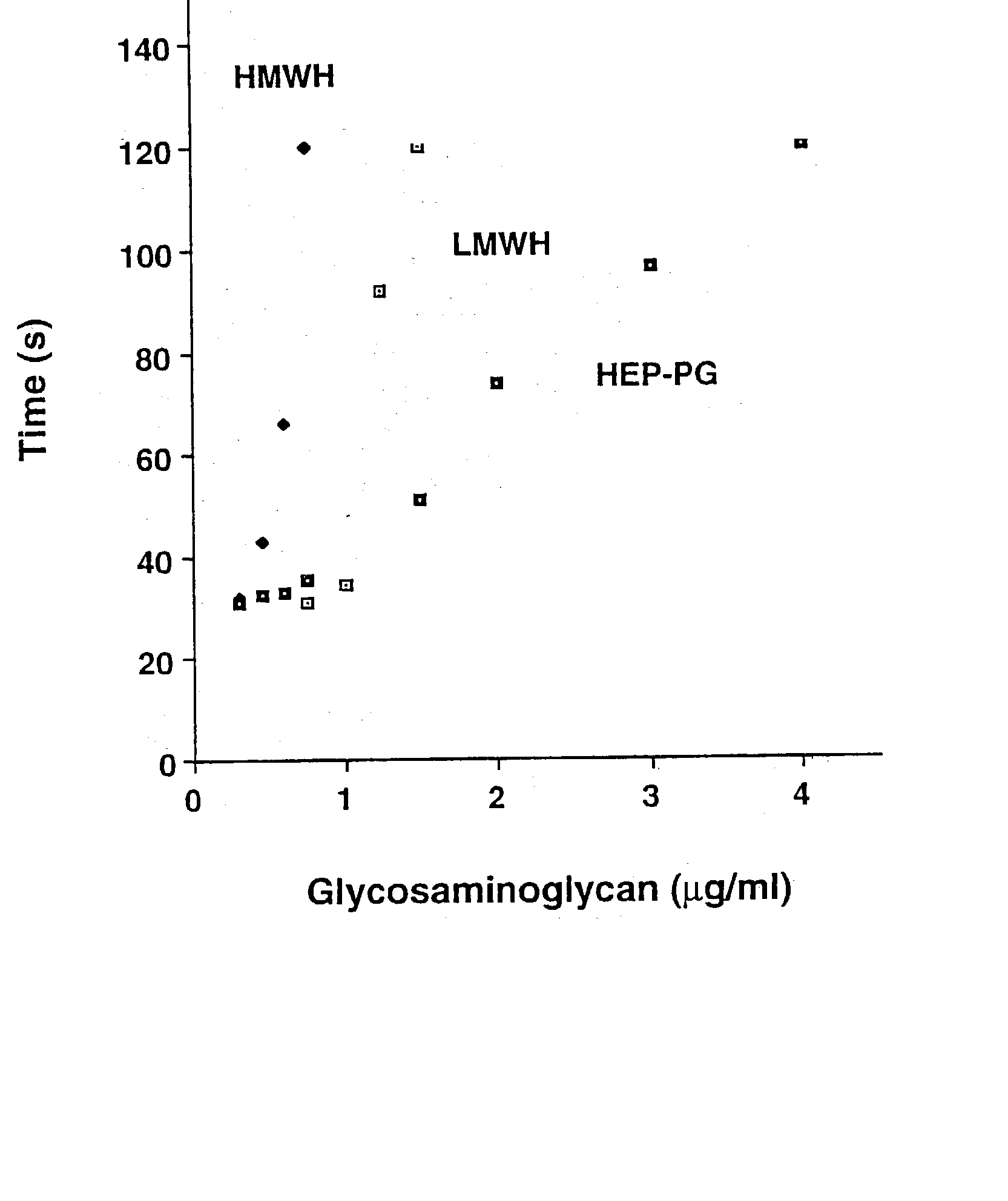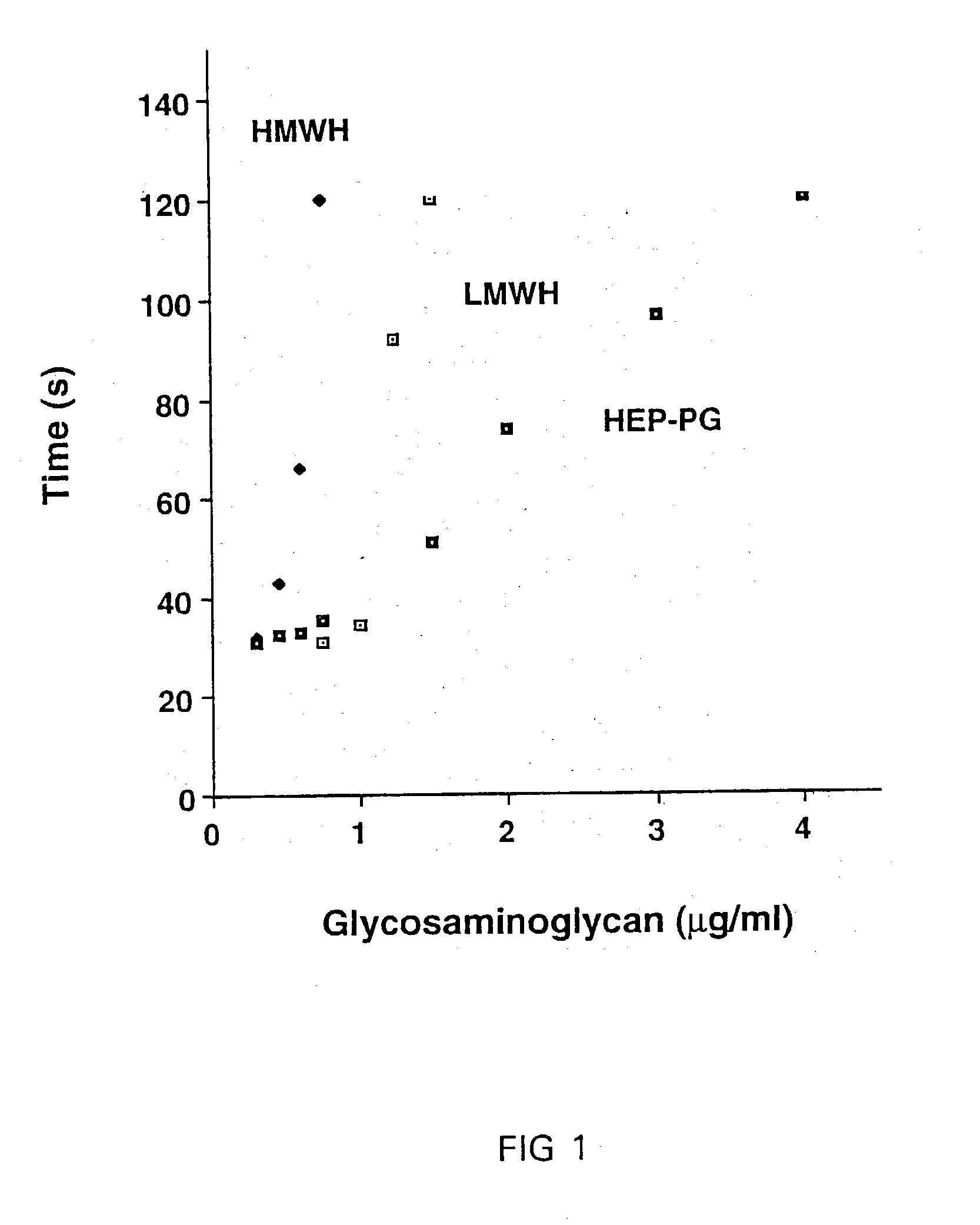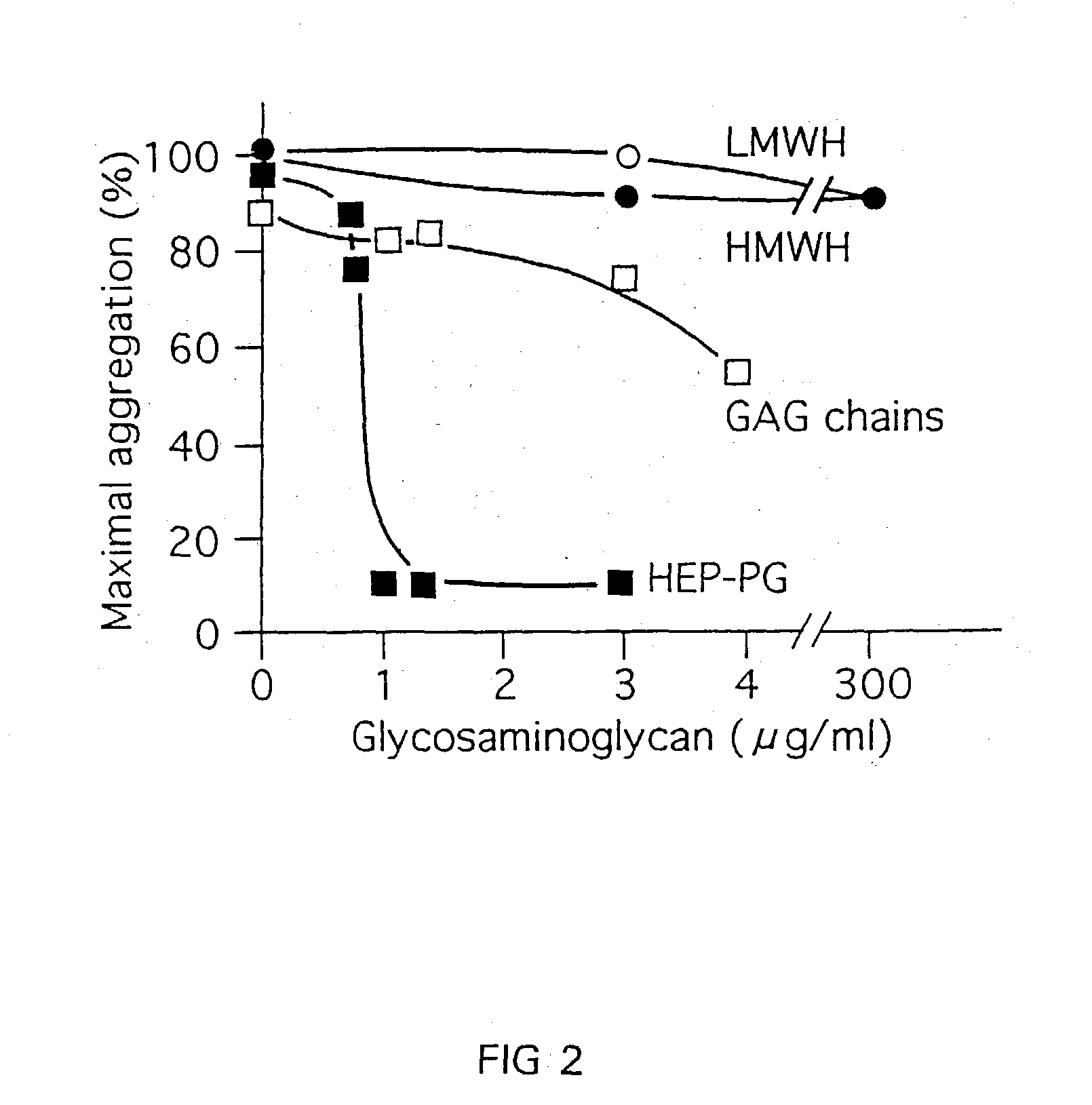Heparin-like compounds, their preparation and use to prevent arterial thrombosis associated with vascular injury and interventions
a technology of heparin and compounds, applied in the field of heparinlike compounds, can solve the problems of not being suggested for therapeutic or corresponding use, not being used clinically, and natural or native conjugates are difficult to prepare in pure form, so as to prevent thrombosis and facilitate screening.
- Summary
- Abstract
- Description
- Claims
- Application Information
AI Technical Summary
Benefits of technology
Problems solved by technology
Method used
Image
Examples
example 1a
[0099] Methods of Obtaining Heparin Proteoglycan (HEP-PG) Heparin Proteoglycans (HEP-PG) Exocytosed by Stimulated Mast Cells
[0100] Mast cells were isolated from rat peritoneal and pleural cavities as described (Yurt R W, Wesley Leid, Jr.R, Austen K F. J Biol Chem 1977; 252:518-521). In a standard assay, 10-13.times.10.sup.6 mast cells were incubated in 1 ml of PBS buffer containing 0.1 mg / ml HSA (Red Cross Transfusion Service, Helsinki, Finland) and 5.6 mM glucose. After preincubation (15 min, 37.degree. C.) the cells were incubated for 15 min with compound 48 / 80 (Sigma Chemical Co) (5 .mu.g / ml), a specific mast cell agonist, to induce mast cell degranulation. Control experiments showed that compound 48 / 80 does not induce platelet aggregation. The degranulated mast cells were then sedimented by centrifugation at 150.times.g for 10 min, the supernatant was centrifuged for a further 15 min at 12000 g to sediment the exocytosed granules, and the granule-free supernatant was analyzed fo...
example 1b
[0101] Methods of Obtaining Heparin Proteoglycan (HEP-PG) Natural Heparin Proteoglycans (HEP-PG)
[0102] Connective-type mast cells, such as skin and serosal mast cells of mammalian origin can be isolated with the method described in example 1A or slightly modified methods, not only from rats, but also from other mammalian species such as bovine, swine, sheep, etc. During slaughtering of cows or pigs peritoneal; and pleural lavage is performed with phosphate buffered saline. The pooled fluids are centrifuged once at 100.times.g for 5 min and the sedimented cells are resuspended in PBS. The isolation of mast cells is obtained by gradient centrifugation in Ficoll, during which mast cells concentrate at the interphase between 30% and 40% Ficoll layer. To obtain the soluble proteoglycans mast cells are stimulated with compound 48 / 80, a basic polyamine, or calcium ionophore A 23187, which induce exocytosis of the mast cell granules.
[0103] In contrast to the traditionally isolated bovine or...
example 1c
[0105] Methods of Obtaining Human-Derived Natural Heparin Proteoglycan (HEP-PG) from Human Mast Cells
[0106] Connective-type mast cells, such as skin and serosal mast cells of human origin can be isolated with the method described in Example 1A or slightly modified methods. It is to be observed that only a small sample is required, which can be obtained from a patient with routinely performed biopsy procedures. The human derived mast cells are thereafter cultivated in a conventional cell culture media and under conditions allowing good proliferation of the mast cells., The mast cells are harvested with phosphate-buffered saline and treated as described in Example 1A and 1B. It is also to be observed that once cultured, the cell cultivate can be preserved and stored by per se known methods; and provides an unlimited source for producing more cells.
PUM
| Property | Measurement | Unit |
|---|---|---|
| average molecular weight | aaaaa | aaaaa |
| average molecular weight | aaaaa | aaaaa |
| molecular weight | aaaaa | aaaaa |
Abstract
Description
Claims
Application Information
 Login to View More
Login to View More - R&D
- Intellectual Property
- Life Sciences
- Materials
- Tech Scout
- Unparalleled Data Quality
- Higher Quality Content
- 60% Fewer Hallucinations
Browse by: Latest US Patents, China's latest patents, Technical Efficacy Thesaurus, Application Domain, Technology Topic, Popular Technical Reports.
© 2025 PatSnap. All rights reserved.Legal|Privacy policy|Modern Slavery Act Transparency Statement|Sitemap|About US| Contact US: help@patsnap.com



